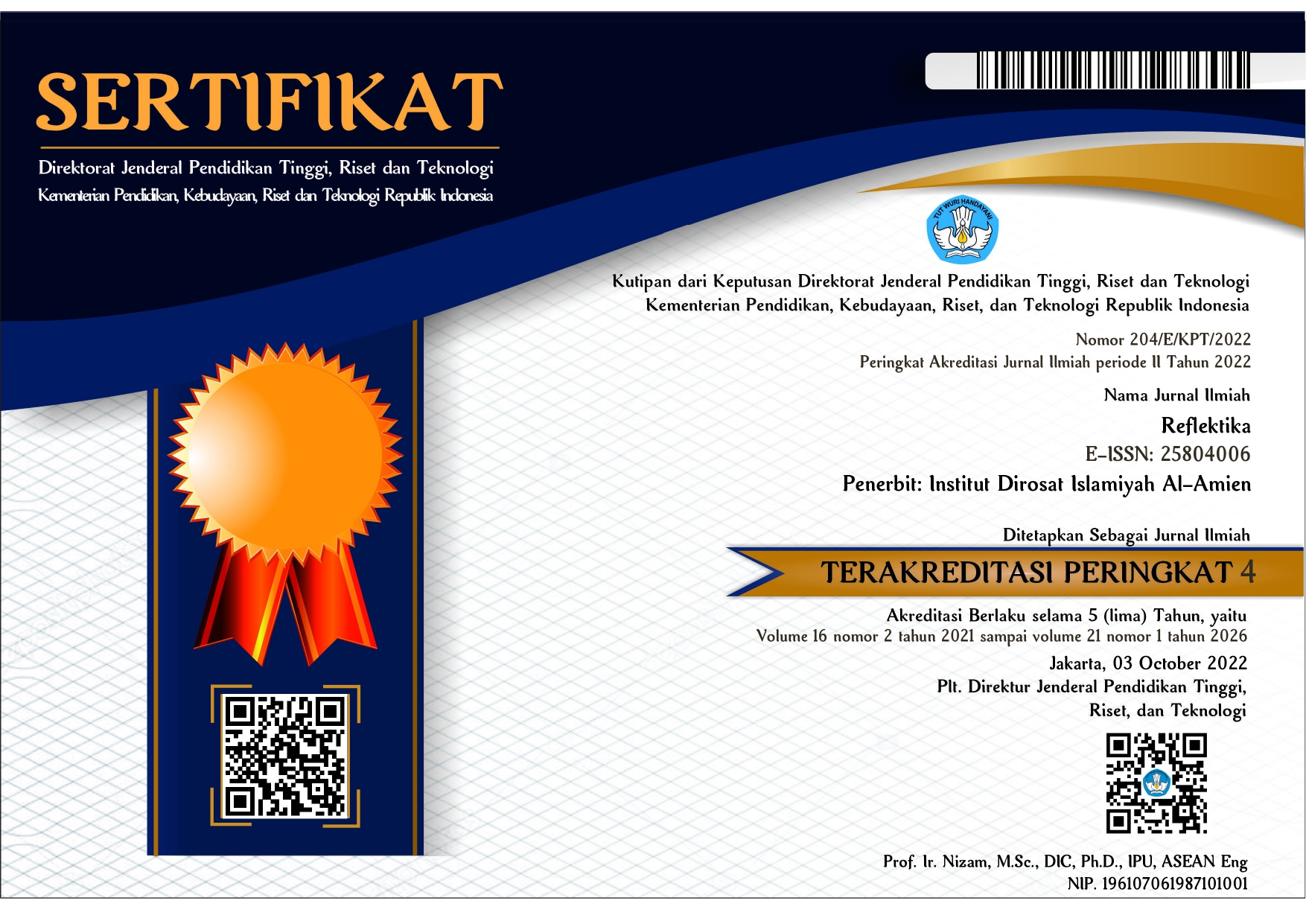ANALISIS JUMLAH UANG BEREDAR DAN INFLASI TERHADAP NILAI AKTIVA BERSIH REKSADANA SYARIAH
Abstract
Keywords
References
Abi, Fransiskus Paulus Paskalis. (2016). Semakin Dekat dengan Pasar Modal Indonesia. Yogyakarta: Deepublish.
Adrian, M., & Rachmawati, L. (2019). Pengaruh Inflasi dan Nilai tukar rupiah terhadap nilai aktiva bersih reksadana syariah. Jurnal Ekonomi Islam, 2, 1–9.
Apriyanto, M., & Setyowati, D. herli. (2022). Pengaruh BI Rate , Inflasi , dan Kurs Terhadap Nilai Aktiva Bersih Reksadana Syariah Campuran. Jurnal Akuntansi, Politeknik Negeri Bandung, 2(3), 559–568.
Arikunto, S. (2009). Prosedur Penelitian Pendekatan Praktik. Rineka Cipteknologi Informasi.
Karim, A. (2015). Ekonomi Makro Islam, Edisi Ketiga. PT. Raja Grafindo.
Ni Luh Gede Ari Luwihadi dan Sudarsana Arka. (2017). “Determinan Jumlah Uang Beredar dan Tingkat Inflasi di Indonesia Periode 1984-2014â€, Jurnal EP Unud, Volume 6, Nomor 4, 31.
Nofiatin, Ike. (2013). “Hubungan Inflasi, Suku Bunga, Produk Domestik Bruto, Nilai Tukar, Jumlah Uang Beredar dan Indeks Harga Saham Gabungan (IHSG) Periode 2005-2011â€, Jurnal Aplikasi Manajemen, Volume 11, Nomor 2.
Nurjannah, A., Hrtini, T., & Azwari, P. C. (2022). Pengaruh Bi Rate , IHK , Dan JUB ( M2 ) Terhadap NAB Reksadana Pada Masa Pandemi Covid-19 di Indonesia. AJournal Management, Business and Accounting, 21(2), 174–183.
Setiawan, Firman. (2017). Buku Ajar Lembga Keuangan Syari’ah. Pamekasan: Duta Media Publishing.
Setiawan, F., & Qudziyah. (2021). Analisis jumlah uang beredar, inflasi dan nilai aktiva bersih reksadana syariah. JES : Jurnal Ekonomi Syariah, 1(September), 191–201.
Suhesti Ningsih dan L. M. S. Kristiyanti. (2019) “Analisis Pengaruh Jumlah Uang Beredar, Suku Bunga dan Nilai Tukar terhadap Inflasi di Indonesia Periode 2014-2016â€, Jurnal Manajemen Dayasaing, Volume 20, Nomor 2, 96-103.
Soemetra, Andri. (2017). Bank dan Lembaga Keuangan Syariah. Jakarta: Prenada Media.
Yunus, M., Purnomo, A., & Zakiyah. (2021). Pengaruh Indeks Harga Konsumen Dan Jumlah Uang Beredar Terhadap Nilai Aktiva Bersih Reksa Dana Syariah Periode 2017-2019. Doctoral Dissertation, Universitas Islam Kalimantan MAB.
Wicaksono, Widhi, dkk. (2020). Ekonomi Islam Metode Hahslm. Koto Baru Solok: LPP Balai Insan Cendekia.
Winarno, W. W. (2015). Analisis ekonometrika dan statistika dengan EViews. Edisi 4. UPP STIM YKPN.
DOI: 10.28944/reflektika.v17i1.974
Refbacks
- There are currently no refbacks.


.png)

